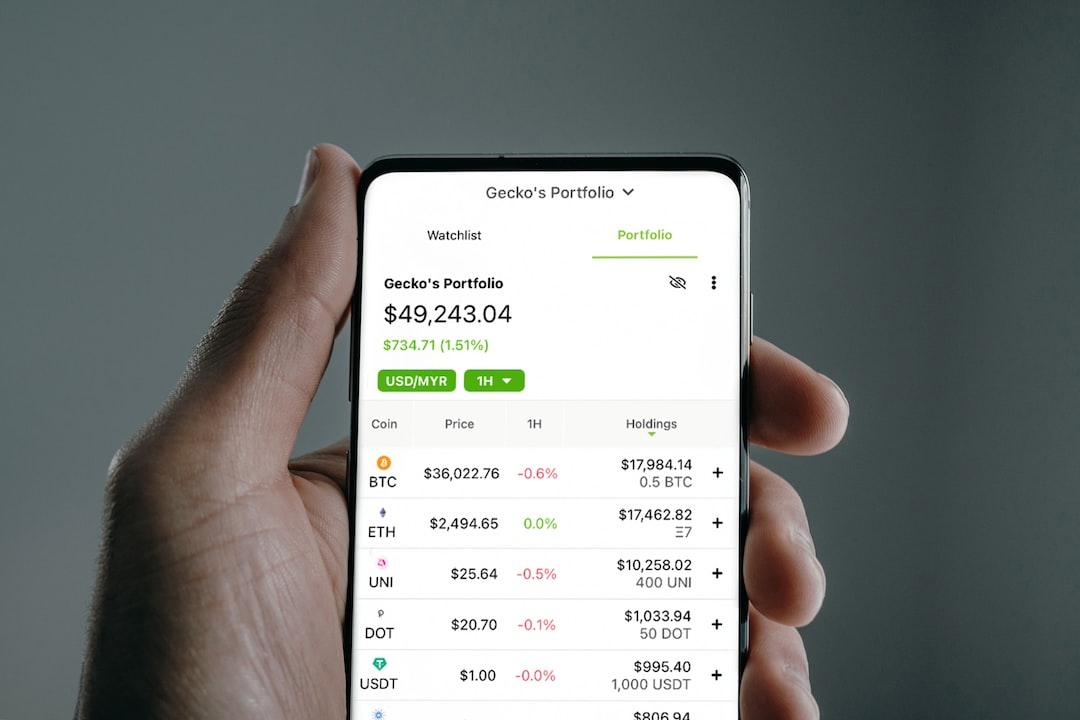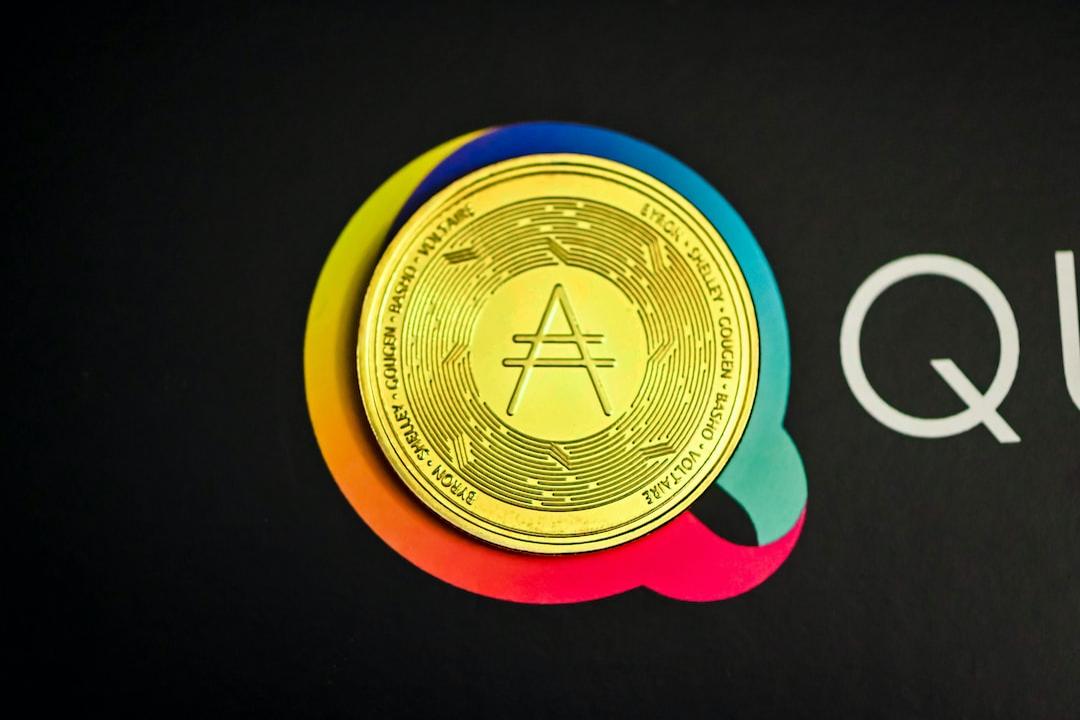Eigenlayer enters the next growth stage – the upcoming explosion of AVS
$EIGEN
is online, but there is a feeling that a bubble has been burst by rats. However, we can’t help but study the new things, besides Eigenlayer officially launching a new concept – inter subjective forking, I believe few people have studied the recently launched AVS to see which teams are involved and what possibilities there are in the future.
Advertisement – Please scroll down for the rest of the article




Many people have questioned the future development of Ethereum, but I believe that we are just about to enter the next stage starting from the “eigenlayer mainnet launch”. After all, the majority of people in the market analyze the prospects based on price. We have experienced this during the low period of Solana in the past. Of course, the price of ETH is currently dismal, breaking the 3000 support line, which means it is worth doing homework at this time. Let’s begin.
Table of Contents
Toggle
A simple review of the growth data in the staking track
Introduction to AVS (Actively Validated Services)
Eigen DA (Staked amount: 2.7 million ETH):
Eoracle Network (Staked amount: 1.87 million ETH):
Witness Chain (Staked amount: 1.82 million ETH):
Lagrange (Staked amount: 1.59 million ETH):
Brevis (Staked amount: 1.38 million ETH):
Alt_layer (Staked amount: 1.3 million ETH):
Omni Network (Staked amount: 1.28 million ETH):
Xterio Games (Staked amount: 1.27 million ETH):
Automata Network (Staked amount: 870,000 ETH):
Eigenlayer’s staking ecosystem approaches a TVL of nearly 16 billion USD
Compared to December, the current liquid restaking track has reached 10 billion USD according to DeFillama’s calculation. Ethefi and Renzo TVL on Binance have reached 3 billion USD. Puffer Finance and Kelpdao are closely following with volumes of 1.27 billion and 760 million USD respectively.
This means that in the past four months, it has grown nearly tenfold. The staking protocol itself, classified as Eigenlayer’s ecosystem, has reached 15.76 billion USD, nearly 160 billion USD. Why are so many ETH staked in it?
AVS includes middle layers on the Ethereum network (such as oracles, cross-chain bridges, side chains, etc.), and non-EVM applications need to bear the cost (ETH) to operate nodes. Assets staked again on EigenLayer can:
Reduce project operating costs
Maintain higher security
Therefore, in the current state of everything being on the chain, projects willing to attach to the Ethereum ecosystem have emerged one after another, further increasing the demand for ETH.
Currently, there are 9 AVS developed through Eigenlayer. It can be observed that the seven-day growth data are all double-digit, and the largest volume EigenDA has even surpassed hundreds of node operators. It is mainly node operators who participate, with fewer opportunities for retail investors to participate. Therefore, many people have overlooked this market.
How much funds are there among these AVS? Even Lagrangedev, ranked fourth, already has 4 billion USD staked, exceeding Sei Network’s 3.3 billion USD, Polygon’s 2.6 billion USD, and 2.1 billion USD for others.
Let’s further understand these nine AVS, including EigenDA, Eoracle, Witness Chain, Brevis, Omni Network, Altlayer, Xterio Games, Automata Network, etc.
Eigenlayer’s own data availability layer, such as the layer 2 – Mantle launched by BitDAO, is based on the development of EigenDA. It allows authorized nodes to provide data availability services to the Mantle network, improving overall network performance. These nodes need to be maintained through staking $MNT, realizing modular blockchain.
Further reading:
BitDAO upgrades its brand, Mantle Network, and develops a $200 million ecological fund for Layer 2 ecosystem
Focusing on the prophetic machine in the RWA sector, Renzo’s team has delegated nearly 270,000 ETH to Luganodes, which provides services to Eigen_DA and Eoracle_network. Holders of $ezETH can earn their own Renzo points and eoracle points. Do you understand now? In addition to the restaking protocol, you can now also obtain AVS service points.
However, the big players in the market often lie in ambush. If we believe that this bull market will continue, it is worth keeping an eye on a few AVS services, which will definitely have good opportunities.
Renzo’s tweet link
https://x.com/RenzoProtocol/status/1781475291778658513…
Witness Chain aims to convert unverified physical properties in the DePIN network into measurable and verifiable digital proofs through its coordination layer (DCL). These proofs can be further proven by different applications or the DePIN chain itself to establish new products and services. The benefits will include:
Creating new services / building a basket of products
Improving resource utilization
Innovation and service improvement
Witness Chain has actually been developed for three years, and the organization behind it is Kaleidoscope Blockchain. The founder is Ranvir Rana, who also has a good relationship with Eigen founder Sreeram Kannan and Polygon founder Sandeep Nailwal, and they all come from India.
Lagrange is a zk-based AVS. It was launched on the Euclid testnet on April 17th. The product is a ZK coprocessor and Ethereum’s first verifiable database. It uses efficient computation to create dApps with massive data in smart contracts. It includes low hardware requirements, trustless access that supports cross-chain data, and low verification costs for AVS, which may bring about a new generation of innovations to DeFi protocols. Lagrange Labs raised $4 million in May 2023, with 1KX as the lead investor, and other investors include Maven11, Lattice Fund, CMT Digital, Daedalus Angels.
Similar to the previous one, Brevis provides coChain AVS, which integrates encrypted economic security and zero-knowledge proofs into one model to provide full-chain data proofs. This new architecture can significantly reduce the cost of ZK coprocessing and allow dApp developers to explore possibilities that were previously not achievable with the “pure ZK” model. It previously announced partnerships with Automata Network and Aperture Finance.
Potential use cases include:
Easy creation of VIP loyalty programs for DEX
On-chain liquidity management protocols triggered by user intent (specific on-chain states and events)
Multi-dimensional and zero-knowledge-based on-chain reputation, which is more about the scope of DID
Interestingly, Brevis is actually developed by Celer Network. Brevis’ information was released as early as March 2023. The founder is Mo Dong, who has been deeply involved in the field of “cross-chain interoperability” for a long time.
Tweet link:
https://x.com/CelerNetwork/status/1638330932603109379…
Perhaps the most familiar one is Altlayer, the leader of RaaS (Rollup as a Service). It is also a project that I have been paying attention to since the bear market. Altlayer can be said to be a tier 1 partner in the era of multiple chains. The team mentioned in a post on April 25th that it is currently the largest node operator in Eigenlayer’s ecosystem (7563 people).
Why do so many projects need to cooperate with Altlayer? In addition to helping Xterio create a new layer 2, Altlayer also has Altlayer MACH AVS, which allows users to delegate assets such as ETH and LST (liquid staking token) $ALT to any node, providing performance improvements for Rollup with fast finality.
Furthermore, it also provides services for detecting malicious network participants in terms of economic security and decentralized verification of rollup states.
A recent notable update is the collaboration with Polyhedra. AltLayer has joined as a node operator for Polyhedra’s Bitcoin dual-staking AVS, ensuring transaction security through EigenLayer’s restaking mechanism.
Omni Network is doing something interesting, and its background should not be underestimated. It has raised $18 million from Pantera Capital, Two Sigma Ventures, Jump Crypto, and Spartan Group, as stated in their Twitter profile, “The blockchain built to unite all rollups.”
Omni Network’s AVS – Omni Omega’s main selling point is cross-chain interoperability. It has launched The Open Liquidity Network project (with partners including Sushiswap, Canto, and Flow). It enables tokens to circulate on various EVM chains through the xERC-20 standard, solving the problem of fragmented liquidity on different chains. The airdrop targets include Puffer Finance, Story Protocol, Monad, Xion Network, Caldera, Elixir, and Movement, among other key ecological protocols.
XterioGames Mach is an AVS developed based on Altlayer. Currently, users can earn future $XTER tokens by staking $ALT in the launch pool.
Xterio itself is a one-stop web3 game distribution platform that I have previously introduced. The founding team has rich game experience and comes from game giants such as EA Games, Activision Blizzard, FunPlus, and NetEase. For more details, please refer to my previous tweet.
https://x.com/Alvin0617/status/1732443309896060990…
Automata, based on Proof of Machinehood, is an AVS that went live on April 26th. It also cooperates with Altlayer. Its initial partners are Linea and Scroll, two zkEVMs. They mentioned that the security and decentralization of most Rollups rely on a single prover and there is no good solution yet.
Multi-Prover AVS can solve this problem, simplifying the process of secondary TEE verification (Trusted Execution Environment: isolated memory areas in hardware that ensure the integrity of calculations and protect privacy) in the protocol, providing modular infrastructure services for zk. About the data of the above AVS.
These are the complete introductions of the various AVS. If you are interested, you can further explore them through the AVS browser developed by StakingRewards for the latest data.

